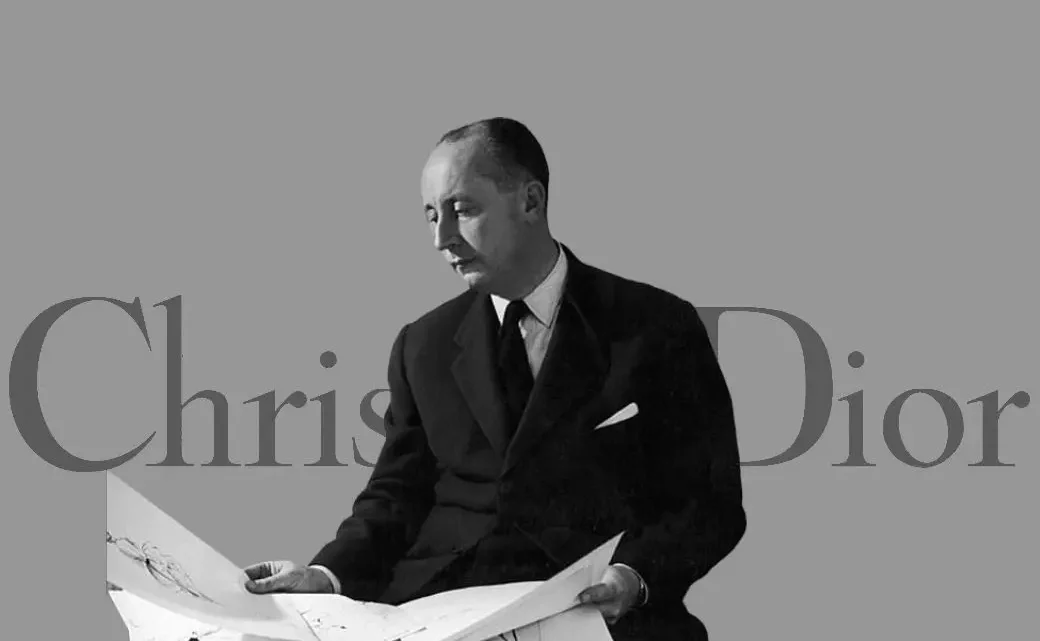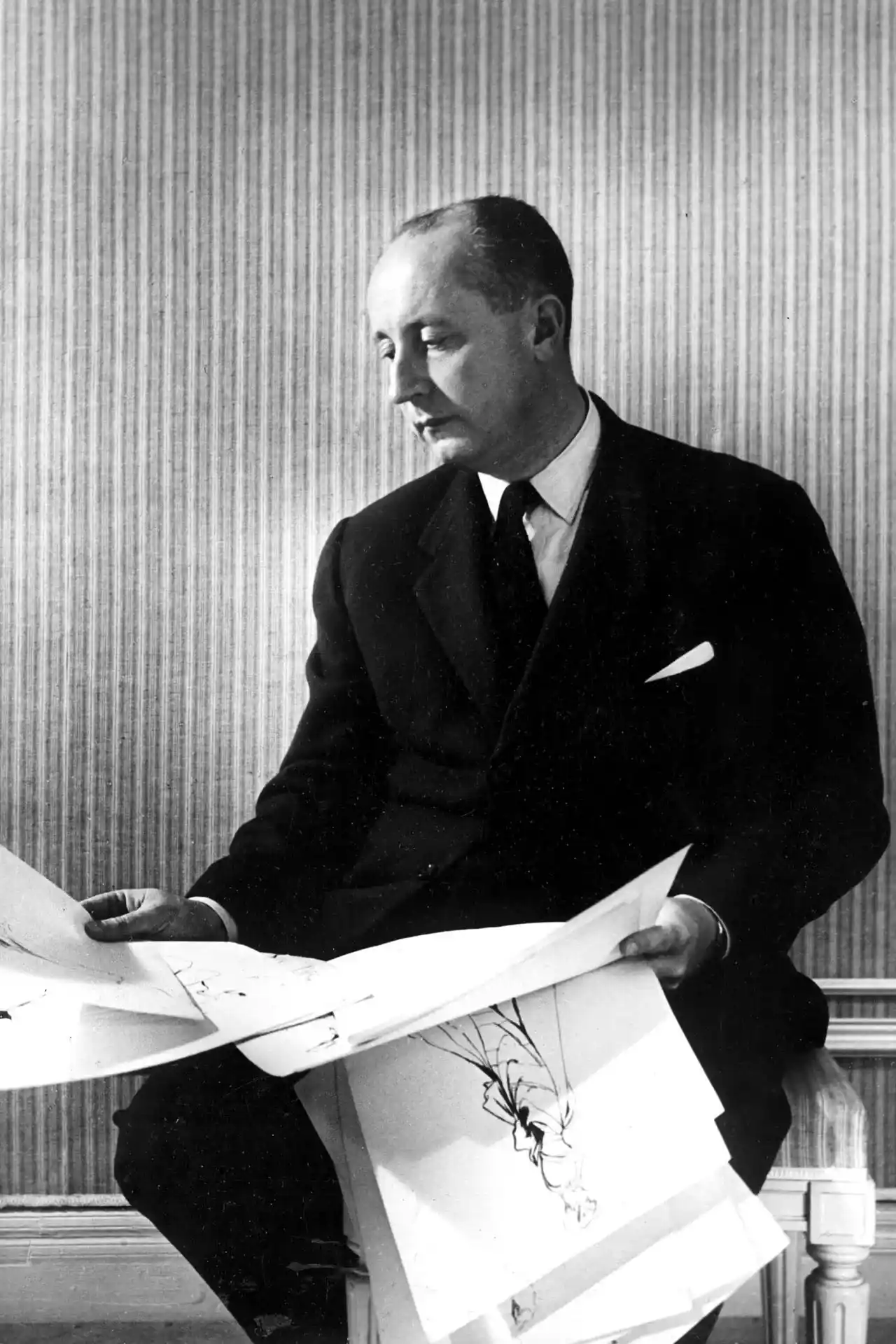
Christian Dior Biography: Wife, Age, Children, Net Worth, Parents, Height, Cause of Death
Biography
Christian Ernest Dior (1905–1957) was a celebrated French fashion designer who revolutionized post-World War II style.
Born in Granville, Normandy, he initially studied political science before opening an art gallery in Paris. After serving in the military and working for designers Robert Piguet and Lucien Lelong, Dior launched his eponymous house in 1946 with backing from textile magnate Marcel Boussac.
Trending Now!!:
His 1947 “New Look” collection—featuring nipped waists, full skirts, and luxurious fabrics—symbolized femininity and opulence, contrasting wartime austerity.
The line propelled Dior to global fame, establishing Paris as the fashion capital. He expanded into perfumes, accessories, and licensing, building a lasting empire before his sudden death from a heart attack at age 52.
| French fashion designer | |
| Christian Dior | |
|---|---|
 | |
| Wiki Facts & About Data | |
| Real Name: | Christian Ernest Dior |
| Stage Name: | Christian Dior |
| Born: | 21 January 1905 (age 52 years old) |
| Place of Birth: | Granville, France |
| Died: | 24 October 1957 (age 52 years), Montecatini Terme, Italy |
| Nationality: | French |
| Education: | École Libre des Sciences Politiques |
| Height: | 1.75 m |
| Parents: | Maurice Dior, Madeleine Dior |
| Siblings: | Catherine Dior, Jacqueline Dior, Raymond Dior, Bernard Dior |
| Spouse: | Not Married |
| Girlfriend • Partner: | Jacques Benita |
| Children: | N/A |
| Occupation: | Fashion Designer • Businessman |
| Net Worth: | $110 million-$165 million (USD) |
Early Life & Education
Christian Dior was born on January 21, 1905, in Granville, a coastal town in Normandy, France, into a prosperous French family.
As the second of five children, he grew up in an affluent environment supported by his father’s successful fertilizer manufacturing business.
His ethnicity was French, reflecting his Normandy roots and family heritage. Regarding religion, Dior had a Roman Catholic upbringing and was described as a deeply devout and superstitious Catholic.
His parents were Alexandre Louis Maurice Dior, an industrialist who owned the firm Dior Frères, and Marie-Madeleine Juliette Dior (née Martin), who came from a bourgeois background.
Dior‘s siblings included an older brother, Raymond Dior (who later became the father of Françoise Dior), and younger siblings Jacqueline Dior, Bernard Dior, and Catherine Dior—the latter born in 1917 and known for her role in the French Resistance during World War II, where she endured imprisonment in the Ravensbrück concentration camp.
Around the age of five, the family relocated from Granville to Paris, where Dior spent much of his childhood in the city’s vibrant cultural scene.
Although he showed early artistic interests, his parents steered him toward a more practical path, hoping he would pursue a career in diplomacy.
For his education, Dior attended the prestigious École Libre des Sciences Politiques (commonly known as Sciences Po) in Paris, where he studied political science.
This formal training contrasted with his personal passions for art and design, which he initially explored through sketching and an interest in architecture before eventually entering the fashion world.
Career
Christian Dior’s journey to becoming one of fashion’s greatest icons began far from the world of haute couture. After graduating from the École Libre des Sciences Politiques in 1928, he turned down a diplomatic career despite his parents’ wishes.
With financial support from his father, Dior opened an art gallery in Paris the same year, exhibiting works by artists like Pablo Picasso, Georges Braque, and Henri Matisse. The gallery flourished until the Great Depression forced its closure in 1931, following his father’s business collapse and his mother’s death.
Faced with financial challenges, Dior began selling fashion sketches to couture houses and magazines in the early 1930s. His talent caught the eye of designer Robert Piguet, who hired him as a design assistant in 1937. Dior created three collections for Piguet before World War II interrupted his career. Mobilized in 1939, he served briefly in the French army and was demobilized in 1940.
In 1941, Dior joined the prestigious house of Lucien Lelong, working alongside Pierre Balmain. During the German Occupation, he dressed the wives of Nazi officers and French collaborators—a practical choice to keep the atelier running and protect staff—while his sister Catherine contributed to the French Resistance, highlighting the family’s divided wartime experiences.
The turning point came in 1946 when textile magnate Marcel Boussac offered to back Dior in creating his own fashion house. On December 16, 1946, the House of Dior opened at 30 Avenue Montaigne in Paris with 85 employees.
Dior’s debut collection, presented on February 12, 1947, introduced the revolutionary “New Look.” With rounded shoulders, a cinched waist, and full skirts using up to 20 yards of fabric, the collection rejected wartime austerity and celebrated feminine elegance. Carmel Snow, editor of Harper’s Bazaar, famously declared, “It’s quite a revolution, dear Christian! Your dresses have such a new look!”—coining the term that would define an era.
The collection’s success was immediate and global. By 1949, Dior designs accounted for 75% of Paris fashion exports and 5% of all French export revenue. Dior expanded quickly, launching Miss Dior perfume in 1947 (named after his sister Catherine), opening a New York boutique in 1948, and establishing Dior London in 1952.
A master of licensing, he pioneered the modern fashion business model, applying his name to furs, stockings, ties, and lingerie while maintaining strict quality control. He also mentored future icons, including Pierre Cardin and Yves Saint-Laurent, who became his assistant in 1955 and successor in 1957.
Throughout the 1950s, Dior presented two major collections annually, introducing new silhouettes such as the A-line (1955), Y-line (1955), and Spindle (1957). His theatrical presentations, innovative marketing, and focus on luxury transformed fashion into both art and industry.
At the time of his death in 1957, the House of Dior employed over 2,000 people and generated annual revenues exceeding $20 million (approximately $200 million today).
In just 11 years, Christian Dior transformed from a struggling sketch artist into the architect of modern fashion, restoring Paris as the center of style after the war and laying the foundation for the luxury fashion industry that continues to thrive today.
Social Media
- Wikipedia: Christian Dior
- Facebook: Christian Dior
- Instagram: Dior Official (@dior)
- Twitter: Dior (@Dior) · X
- LinkedIn: Christian Dior Couture
Personal Life
Christian Dior lived to the age of 52, having been born on January 21, 1905, and passing away on October 24, 1957.
He never married and had no known wives or documented marriages throughout his life.
Similarly, Dior had no children, with biographical accounts consistently omitting any mention of offspring or family beyond his siblings and parents.
Dior stood at a height of 5 feet 9 inches (1.75 meters), as recorded in design and biographical references.
Dior was gay, though he never publicly disclosed his sexual orientation, and he maintained relationships with male partners.
He was known to frequent bohemian and artistic circles in Paris during the 1920s that included gay and bisexual individuals, and he had a series of romantic involvements with men.
At the time of his death, he was survived by Jacques Benita, a North African singer approximately 30 years his junior, described as the last in a line of such companions.
Rumors about his sexuality persisted during his lifetime and after, fueled by his unmarried status and close associations within gay cultural scenes.
The cause of Dior‘s death was a third heart attack, which occurred while he was on vacation in Montecatini Terme, Italy, in the late afternoon as he played a game of cards.
Some conflicting reports from the time suggested alternative details, such as choking on a fish bone leading to the cardiac event, but the primary medical cause remains a heart attack.
Net Worth
Christian Dior‘s net worth at the time of his death in 1957 is estimated to have been around $10 million to $15 million (approximately $110 million to $165 million in today’s dollars, adjusted for inflation).
This wealth stemmed from the explosive success of his fashion house, which generated over $20 million in annual revenue by 1957, global licensing deals, and luxury expansions like perfumes and boutiques.
Dior died as one of the wealthiest figures in fashion, having built a global empire in just over a decade.
NOTICE!! NOTICE!! NOTICE!!
At TheCityCeleb, we strive to provide accurate and up-to-date biographies and entertainment news, focusing on celebrities. Our editorial team researches information from reputable sources, including interviews, official statements, and verified media.If you spot an error or have additional details, please contact us at editor@thecityceleb.com. We value your feedback and are committed to maintaining trustworthy content.


